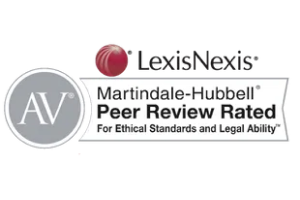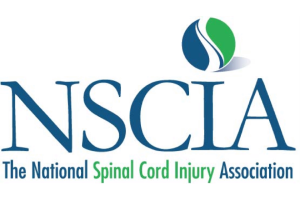Perfringens Poisoning
Overview of Food Poisoning Caused by
Clostridium Perfringens
Perfringens Poisoning is a foodborne illness caused by Clostridium perfringens, a spore-forming bacterium found ubiquitously in the environment (i.e., soil, marine sediment, decaying vegetation, fecal pollution of humans and animals) and intestinal tracts of humans, vertebrate animals and insects. C. perfringens is considered to be the third most common cause of food poisoning in this country. In a 2011 report, the U.S. Centers for Disease Control and Prevention (CDC) estimated that C. perfringens is responsible for nearly 1 million foodborne illnesses in this country each year.
Food poisoning due to C. perfringens leads to acute bacterial gastroenteritis, a symptomatic condition arising from the severe inflammation and irritation of a person’s stomach and intestines. Symptoms of Perfringens Poisoning usually appear abruptly and within a short period (6-24 hours) after ingestion of a sufficient quantity of the C. perfringens organism and/or the enterotoxins produced by the sporulating bacteria. The illness is characterized by its symptoms which include nausea, loss of appetite, abdominal pain / cramping and watery (non-bloody) diarrhea. Less frequently, vomiting, chills, low grade fever and headaches can also occur. Learn more about other Types of Foodborne Illnesses.
Perfringens Poisoning Usually Resolves
Without Long-Term Health Consequences
Fortunately, the relative morbidity associated with Perfringens Poisoning is quite low. The disease is generally self limiting and most victims fully recover within 1-2 days. However, pediatric and geriatric populations are at higher risk so it is not uncommon for young children and older adults to suffer more severe gastrointestinal illnesses lasting one to two weeks. Also, persons suffering other health conditions can experience a more prolonged illness and difficult recovery. The most frequent and concerning complication is dehydration caused by diarrhea and/or vomiting. Dehydration is usually what prompts the need for hospitalization in cases of Perfringens related gastroenteritis. Death or other serious health consequences have occurred, but they are rare.
One possible (but very rare) serious complication of Perfringens Poisoning is a disease called Clostridial necrotizing enteritis (“pigbel syndrome”). This potentially fatal condition is only associated with the Type C strain of Clostridium perfringens. Necrotic enteritis is characterized by infection and resulting necrosis (death) of the small intestines which often leads to septicemia and death.
The Causes of Foodborne Illnesses Due to Clostridium Perfringens
Perfringens Poisoning is not considered to be a contagious disease and is not spread person-to-person. Instead, food is the primary vehicle for the infectious transmission of C. perfringens pathogens. Human illness occurs after consumption of food contaminated with a sufficient quantity of the bacteria and/or toxins produced by the bacteria. C. perfringens is very ubiquitous in the environment and humans are regularly exposed to it. Indeed, the organism is sometimes found in the intestines and feces of healthy individuals. The ingestion of a large quantity of the pathogen and/or its toxins is required to produce gastrointestinal illness.
The vegetative cells of C. perfringens do not cause foodborne illness directly. Rather, gastroenteritis is caused by enterotoxins produced when the vegetative cells multiply and sporulate either in the contaminated food before consumption and/or in the human gastrointestinal tract after consumption. A quantity of enterotoxins sufficient to cause gastroenteritis is primarily acquired by consuming food contaminated with C. perfringens which then grow and produce pathogenic toxins in the gastrointestinal tract. A secondary source is the toxin byproduct already produced by sporulating bacteria and present in the food before consumption, although the quantity of preformed toxins within the food is usually not alone sufficient to cause an intoxication related illness. This explains in part why symptoms usually do not appear during the first few hours after the contaminated food is eaten.
C. perfringens has three characteristics which promote its ability to cause food poisoning. First, it is anaerobic, meaning it thrives in environments with little or no oxygen. Second, in warm temperatures (70-120ºF is optimal), it can grow rapidly, particularly when it is in the presence of high protein foods. Third, and most importantly, it produces endospores which are very hardy and capable of surviving both high and low temperatures. Freezing and heating above 160ºF will usually destroy the vegetative cells and their toxins. As a result, foods adequately cooked and consumed immediately after cooking are rarely associated with Perfringens Poisoning. The risk of food poisoning arises because the endospores of C. perfringens can survive freezing, refrigeration and cooking. If given sufficient time and the right environment, these spores can germinate new vegetative cells which then multiply and produce the illness causing toxins.
Perfringens Poisoning Frequently Occurs at
Schools, Hospitals, Employer Cafeterias and Other Institutional Locations
Foods most often implicated with Perfringens Poisoning are poultry, pork, beef and other meats, casseroles and prepared dishes containing meat, soups or stews containing meat, gravies and meat sauces, and dried or pre-cooked meat products. Episodes of Perfringens Poisoning have also been linked to seafood, shellfish, milk, legumes and highly starched foods like potato salad and macaroni & cheese. Perfringens Poisoning usually occurs when these types of high protein foods are prepared well in advance of their consumption and allowed to remain at warm temperatures between 40-140ºF. This combination of time and favorable environment allows spores that survive cooking to germinate vegetative cells which then multiply and produce their pathogenic toxins. This explains why C. perfringens presents such a challenge for institutional food service providers where large quantities of food must be cooked in advance and then held over several hours for service to populations of people. Indeed, C. perfringens has earned the nickname “food service germ” because it frequently is the cause of food poisoning outbreaks which arise among groups of people served food prepared at a school, hospital, nursing home, employer cafeteria, catered event or similar location.
Outbreaks of Perfringens Poisoning
C. perfringens has been associated with numerous serious outbreaks of gastroenteritis. According to the CDC, there are about 10-20 outbreaks of Perfringens Poisoning every year. However, the number of actual outbreaks is probably much higher as many go unreported to the CDC. Also, many outbreaks are never confirmed as being caused by C. perfringens because there is a lack of stool sample or food source testing. Some of the more notorious confirmed outbreaks of Perfringens Poisoning have involved hundreds of persons suffering gastrointestinal illnesses. Most outbreaks of Perfringens Poisoning involve instances of negligent temperature control by a catering vendor or institutional food service provider at a school, hospital, nursing home or convention. Investigations to determine the cause of these outbreaks have repeatedly revealed situations where cooked food was allowed to slowly cool over an extended period before refrigeration, or food held for prolonged service was not maintained at sufficiently high or sufficiently low temperatures to prevent the growth of C. perfringens.
How to Prevent Food Poisoning Involving Clostridium Perfringens
Proper temperature control is the primary means of preventing foodborne illness caused by C. perfringens. The CDC recommends that foods be adequately cooked with internal temperatures exceeding 145-165ºF. Preferably, foods should be consumed while still hot shortly after cooking. Where necessary to prepare foods in advance or hold them for prolonged service, the CDC advises that they be maintained either above 140ºF (60ºC) or below 41ºF (5ºC). Cooked foods should never be allowed to cool slowly before refrigeration or remain at moderate temperatures for more than a few minutes. Leftovers should be promptly refrigerated and then reheated to at least 165ºF (74ºC) before reservice. Refrigerator temperatures should be at or below 40ºF. Large quantities of cooked food should be divided into smaller quantities so that they can cool faster after being placed in the refrigerator. Other preventive measures include general cleanliness and keeping food prep areas free of environmental pollutants, proper sanitation of contact surfaces and food prep equipment, and good hand hygiene by persons involved in food preparation.
Diagnosis and Treatment of Perfringens Poisoning
There is no vaccine to prevent C. perfringens infections. Treatment is mostly directed to management of the symptoms and providing therapeutic support to minimize the risk of dehydration. According to the CDC, antibiotics are not recommended. Most often, a clinical diagnosis of acute gastroenteritis is made based upon the timing and presentation of symptoms. Pathological identification of the pathogen does not usually occur, although stool samples can be tested to confirm a diagnosis of Perfringens Poisoning. Also, the pathogen can sometimes be identified through bacteriological testing of the food source.
Obtain Legal Representation from an Atlanta Food Safety Law Firm
Ragland Law Firm, LLC is a leading food safety law firm serving consumers in Atlanta, Cartersville, Toccoa, Peachtree City, Thomaston, Warner Robins, Augusta, Savannah and throughout all parts of Georgia. The trial attorneys at Ragland Law Firm, LLC have experience with cases involving food poisoning, adulterated food that has been recalled, foreign object injuries, and allergic food reactions. Learn more about the firm’s Food Safety Case Results. If you want to consult with a qualified personal injury lawyer, contact us to discuss your case. We do not charge for an initial consultation and contingent fee arrangements are available.









